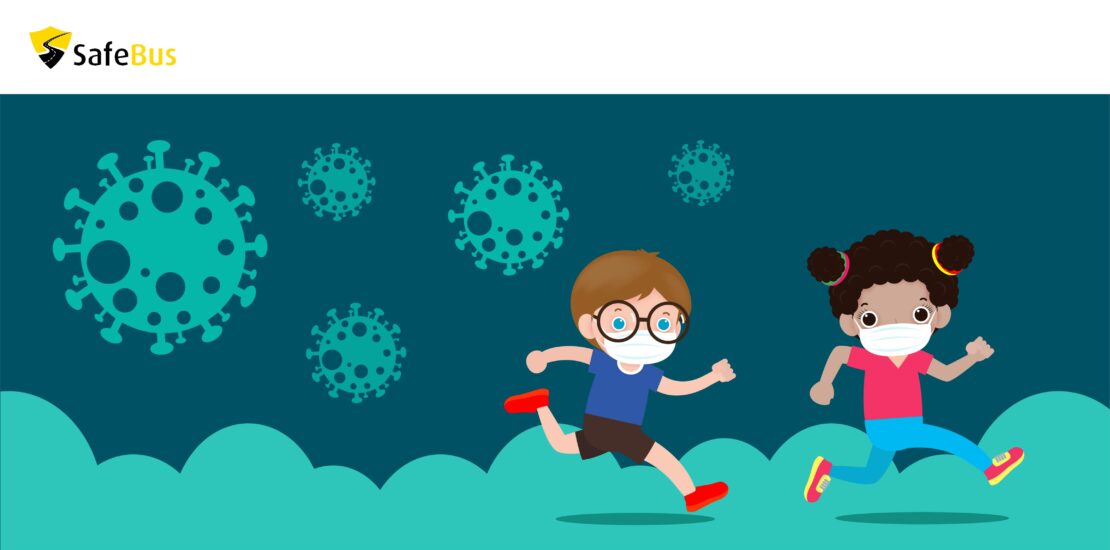- May 11, 2021
- Posted by: Satvir
- Category: Blog

While the COVID-19 outbreak has had a major psychological impact on all age groups, none has, perhaps, been more affected by it than schoolchildren. Plucked out of the familiar setting of the classroom, they have been restricted to their homes for months even as their schooling has shifted to an online-only framework.
This shift, taking place at an extremely formative time in their lives, can and perhaps already is having an impact on their long-term development and psychological health.
Online learning: An unfamiliar realm
To understand how the pandemic is affecting students, it is important to know what the pedagogical
process comprises for young children. Classroom-based education is just a part of the learning and development experience; children also learn a lot from their surroundings, elders, and peers. These interactions are essential for more holistic, well-rounded development as it allows them to learn to form social bonds and improve their soft skills – tools essential for them to thrive in the long run.
Click here to know Student Transport in a Post-pandemic World
While online education enables students to meet curricular goals without risking their health, it does limit the in-person, peer-based interactions with the people around them. The efficacy of the online-only model has also been brought into question, a 2020 McKinsey study estimating that students have struggled to adapt to the ‘new normal.’ The report predicted that schoolchildren in the US will lose out on 3 to 12 months’ worth of learning if the school shutdown continued until January 2021. Students hailing from low-income, Black, and Hispanic families were estimated to be disproportionately affected by the online transition.
This reflects in the psychological health of the students, especially those at a younger age. Child psychologists from 10 countries, including the US, revealed how students are feeling lonely, angry, and demotivated, with cases of anxiety and depression doubling among teenagers since the viral outbreak. The sudden switch to online learning is highlighted as a major contributing factor, along with other pandemic-related triggers such as the fear of losing loved ones and the growing uncertainty about their future.
It does not help that most students in the US do not have a strong support system for mental health issues, especially in families belonging to the lower-to-middle class or non-white communities. For a lot of these students, the school was the place they could receive counseling and help. With schools shut down, the rates of depression are naturally higher in these communities.
Click here to know the Challenges of homeschooling
Children with disabilities face even greater challenges. Neurodevelopmental conditions such as autism require special education revolving around regular occupational, speech, and behavioral therapy – something that cannot be achieved effectively, at scale, through digital platforms or home-based interventions.
The Corona Conundrum: How do schools, educators, and parents deal with this crisis?
The question in front of all stakeholders – educators, schools, governments, and parents alike – is this: how do they facilitate pedagogy in a post-pandemic world that is not limited by the restrictions of the online-only approach?
The focus of any such model should be to ensure children’s well-being and engagement. Many private schools merely shifted to online learning from in-person, school-based learning without accommodating developmental and psychological challenges. This approach, as mentioned above, will not work – but neither will reopening physical classrooms without taking the necessary COVID-appropriate safety measures. To counter these challenges, stakeholders in the US education ecosystem must implement hybrid learning models to balance conventional and online-driven pedagogical approaches. Doing so can enable better quality and more accessible holistic learning and development that is delivered effectively and efficiently.
Click here to know How School Management Systems Help Administrators Drive Exponential Value?
For instance, implementing social distancing and staggered student rosters when reopening schools can help overcome the issues with online-only learning while minimizing the risk to student health and safety in a classroom-based environment. Digital school bus fleet management solutions, such as SafeBus, can be used to ensure that the daily commute remains safe for schoolchildren. Schools can also use cloud-based L&D solutions to plug the gaps in their existing pedagogical models and to facilitate more interactive and engaging learning experiences. Online and offline mental health support frameworks at schools can be complemented with training and awareness sessions aimed at imparting a deeper understanding of psychological issues, triggers, and symptoms to parents and teachers.
Given the rise of psychological issues amongst students in the US, it will not be an overstatement to say that these measures, today, have become non-negotiable requirements. The young children in schools today will be tomorrow’s adults. It behooves us to provide them with not just education, but a nurturing environment that supports their holistic learning needs, health, and socio-emotional wellbeing.
